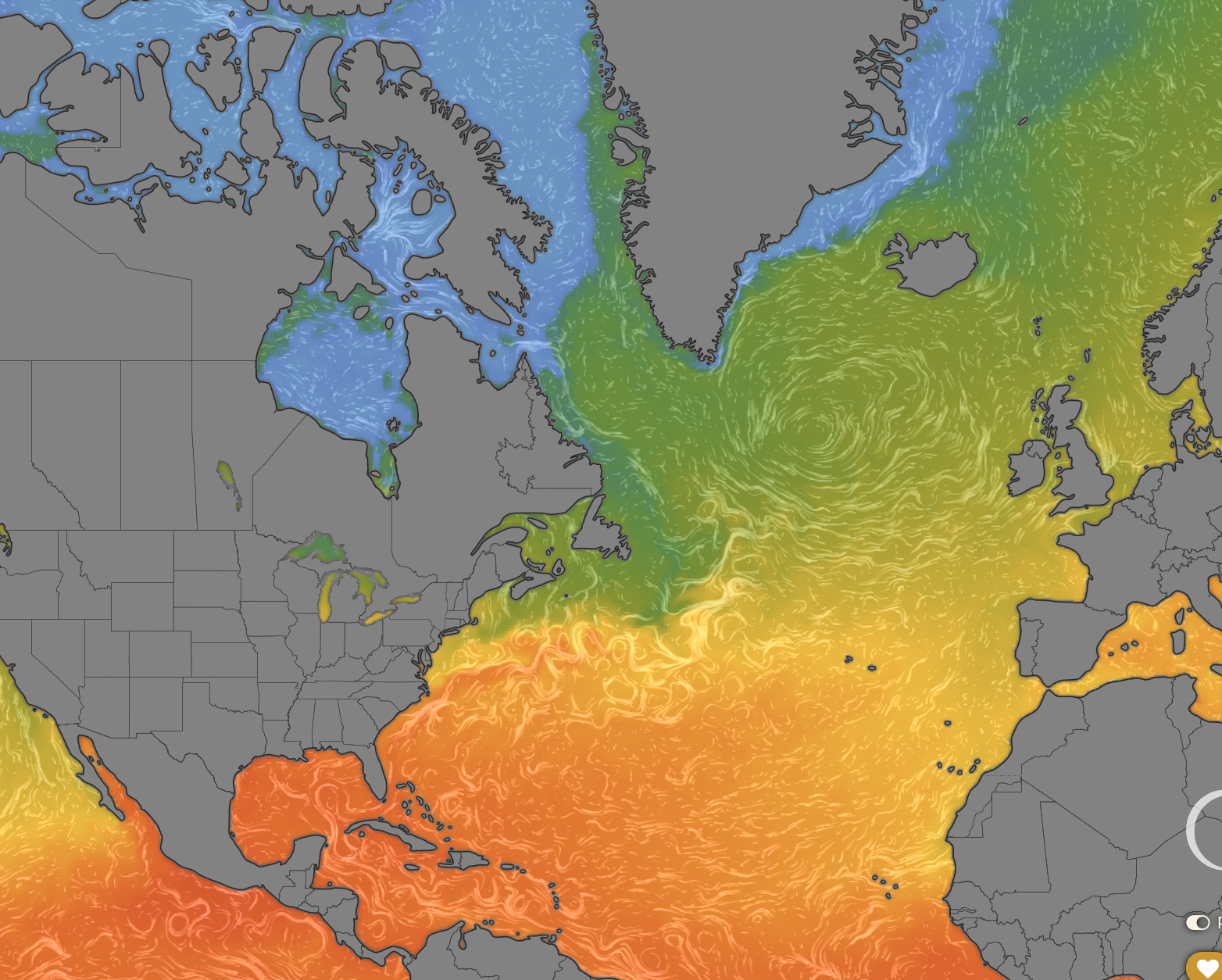We’re headed to sea again!
This time with the BLT (Boundary Layer Turbulence) project.
We MOD members Matthew, Bethan, Nicole, Arnaud, Helen, Gunnar, Sara, Isabella, Charlotte and Andrea have spent the past few days getting ready to head out on the RRS Discovery. Departing Southampton our group is headed for the Rockall trough to collect data on turbulence in a submarine canyon, aiming to solve the mysteries of bottom boundary layers and mixing and how that drives the upwelling limb of the meridional overturning circulation.
The meridional overturning circulation is the name for the slow pole-pole flow of water in the global ocean. Simplified, surface waters at the north and south poles gets cooled by the chilling temperatures and becomes dense enough to sink to the bottom. It then travels towards the equator as North Atlantic Deep Water (coming from the Arctic) or Antarctic Bottom Water (coming from Antarctica). These cold dense waters must eventually be brought back up to the surface to complete what is known as the Global Overturning Circulation. While we understand the formation processes of deep water fairly well, how it rises back up is still an open question. Since this circulation of the ocean is crucial for its ability to sequester heat and carbon, a better understanding of the processes involved is important for understanding climate change.
The Meridional Overturning Circulation (MOC). Figure 14.11 from Professor Lynne Talley’s book “Descriptive Physical Oceanography”.
For a long time oceanographers believed that the upwelling that closes the global overturning circulation occurred throughout the ocean interior. However, recent observations and theories suggests that upwelling is actually concentrated along sloping bottom boundaries in the ocean, such as steep continental slopes or walls of a submarine canyon, and that highly localized turbulence within thin (typically tens of metres thick) layers near the seafloor, known collectively as the bottom boundary layer, is what actually drives the upwelling of waters from the abyss.
Now that we are on the third (!) BLT expedition, we are much more experienced (though there are always new problems to run into). We have been setting up in Southampton and getting everything on the ship ready for science at sea, where we will spend several weeks profiling. Our main instruments are the epsifish - a microstructure profiler we built in house - and the fast CTD (conductivity, temperature and depth) profiler that can can be winched up and down rapidly for high resolution.
By Monday last week everyone in our group had arrived: Matthew, Bethan, Nicole, Arnaud, Helen, Gunnar, Sara, Isabella, Charlotte, and Andrea. We are a good mix of experience levels (from student to professor) and disciplines (engineering and science). We received our cabin assignments and went for a walk around Southampton.
Isabella and Andrea working on the winch
Sara and Charlotte tightening things up
On Tuesday we began mobilizing the equipment. We opened the containers that were shipped here from San Diego and those that were left here after the previous BLT cruise. We started setting up the lab, and the epsifish/FCTD boom was constructed.
Andrea on the winch.
Testing the epsi-fish
By the end of Wednesday the boom had cables attached to it that connected it to power and ran all the way to the lab. We had cameras and lights up too. Back on the science side, there were many debates about where and when to deploy moorings during the next couple of weeks.
On Thursday the lab was almost finished being set up, the electronics were placed and tidying up had started. The new grad students on the cruise (Charlotte and Andrea) were frantically downloading the software they need while the ship was still on the dock.
Look at the lab! So neat. This is he “before” picture. (There will be an “after” one too for comparison)
Sunny in Southampton, the Friday shirts were on.
Now it’s Friday and we have strapped down the lab and are ready to sail tomorrow! The lab looks professional, many Matlab scripts have been passed around, and the epsi was put into the water off the boom for the first time.
Wish us luck on the seas!
P.S You can read more on the BLT project here and one of the previous cruises here.
Written by Andrea Rodriguez-Marin Freudmann




















